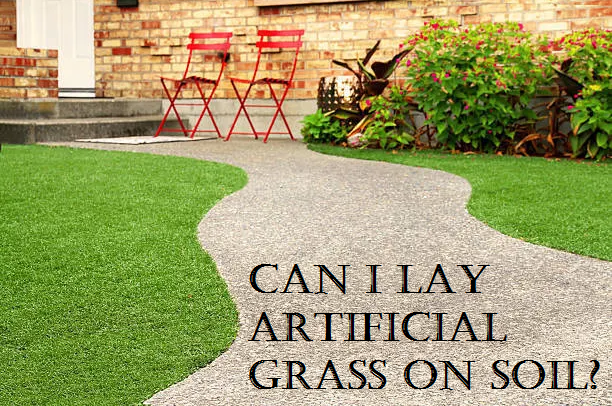Artificial grass has become a popular choice for homeowners looking to achieve a lush, green lawn without the hassle of maintenance. One common question that arises is whether it’s possible to lay artificial grass directly on soil. Let’s explore the pros and cons of this approach to help you make an informed decision.
Pros
1. Cost-Effectiveness:
Laying artificial grass on soil can be more cost-effective compared to installing it on a concrete or gravel base. You can skip the expenses associated with preparing a sturdy base, such as excavation and materials.
2. Natural Drainage:
Soil naturally absorbs water, providing a drainage solution for artificial grass laid directly on it. This can be advantageous in areas prone to heavy rainfall, as it helps prevent water pooling on the surface.
3. Eco-Friendly Option:
By installing artificial grass on soil, you’re minimizing the use of non-biodegradable materials like gravel or concrete, making it a more environmentally friendly choice.
Cons
1. Uneven Surface:
Soil is prone to settling and shifting over time, which can result in an uneven surface for your artificial grass. This unevenness may lead to an inconsistent appearance and potential tripping hazards.
2. Weed Growth:
Without a barrier between the soil and artificial grass, there’s a risk of weed growth. Weeds can penetrate through the turf and require regular maintenance to prevent them from taking over your lawn.
3. Drainage Issues:
While soil provides natural drainage, it may not be sufficient in all circumstances. In areas with poor soil drainage or high water table levels, laying artificial grass directly on soil could lead to waterlogging and potential damage to the turf.
Tips for Laying Artificial Grass on Soil:
- Prepare the Soil: Ensure the soil is level and free from debris before laying the artificial grass. Remove any existing vegetation and compact the soil to create a stable base.
- Use Weed Membrane: Consider installing a weed membrane between the soil and artificial grass to prevent weed growth. This additional layer acts as a barrier while still allowing for adequate drainage.
- Provide Proper Drainage: Assess the drainage capabilities of the soil and make adjustments if necessary. Incorporate drainage channels or perforated pipes to prevent water buildup.
- Regular Maintenance: Keep an eye on the condition of the artificial grass and address any issues promptly. Regular brushing, cleaning, and infill replenishment can help maintain its appearance and longevity.
In conclusion, while it is possible to lay artificial grass on soil, it comes with its own set of challenges and considerations. By weighing the pros and cons and taking necessary precautions, you can achieve a beautiful and functional lawn that suits your needs and preferences.
Ready to transform your landscape? Get started with Birmingham artificial grass today and enjoy a lush, hassle-free lawn all year round!
